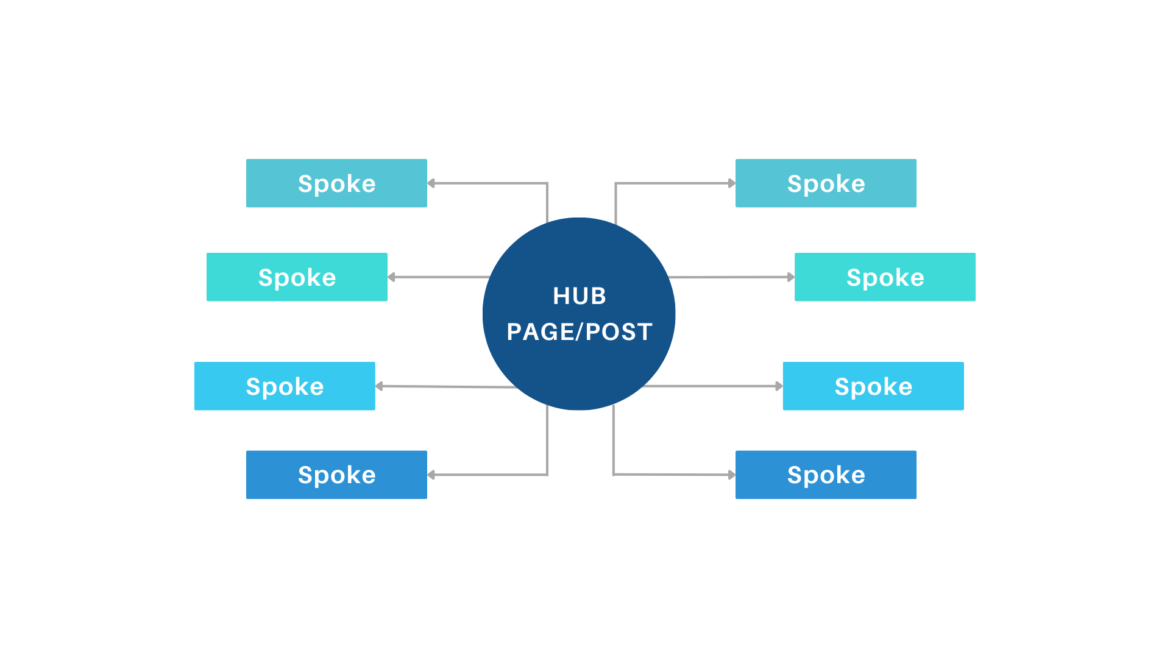B2B businesses must constantly adapt and refine their content marketing strategies to stay competitive. One strategy that has worked exceptionally well for Ice Nine Online‘s B2B clients is the Hub & Spoke content marketing model. This approach offers a structured and systematic way to organize and deliver content, improve SEO, and enhance overall marketing efforts.
In this comprehensive guide, we will delve deeper into the Hub & Spoke model, providing detailed definitions, examples, and actionable insights on how B2B businesses can leverage it to drive success. Additionally, we will explore the concept of pillar content, and how it differs from Hub & Spoke, and share compelling statistics about the model’s effectiveness. Furthermore, we will discuss how WordPress, a popular content management system, can be a valuable tool to facilitate the implementation of the Hub & Spoke model.
Table of Contents
- Understanding the Hub & Spoke Model
- Examples of Hub & Spoke in Action
- How B2B Businesses Can Leverage the Hub & Spoke Model
- Pillar Content vs. Hub & Spoke
- Statistics on the Effectiveness of the Hub & Spoke Model
- Leveraging WordPress for Hub & Spoke Content Strategy
- Conclusion
1. Understanding the Hub & Spoke Model
The Hub & Spoke content marketing model is a strategic approach that centers around creating a central “hub” piece of content and related “spoke” content pieces. This model is akin to the spokes of a wheel connecting to a central hub. The hub serves as a comprehensive resource on a specific topic, while the spokes provide supplementary information, delve into subtopics, or address related themes.
Key Elements of the Hub & Spoke Model:
- Hub Content: This is the central, comprehensive piece of content that covers a broad topic or subject in detail. The hub content serves as the cornerstone of the content strategy and links to the various spoke content.
- Spoke Content: These are supporting content pieces that revolve around the hub topic. They provide more in-depth insights into specific aspects, allowing the audience to explore related subtopics.
- Internal Linking: Internal links are strategically placed within spoke content, directing readers back to the hub content. This interlinking structure reinforces the hub’s authority and enhances user experience.
2. Examples of Hub & Spoke in Action
To gain a deeper understanding of the Hub & Spoke model, let’s delve into real-world examples that showcase its practical application:
Example 1: Software Company
- Hub Content: A comprehensive guide titled “The Ultimate Guide to Cloud Computing for Businesses.” This guide covers the fundamentals of cloud computing in depth.
- Spoke Content: Supporting articles such as “Benefits of Cloud Computing in Healthcare” and “Cloud Security Best Practices.” These spoke articles provide detailed insights into specific aspects of cloud computing.
- Internal Linking: Within the spoke articles, there are strategically placed links that guide readers back to the main hub guide, encouraging them to explore the comprehensive resource.
Example 2: Marketing Agency
- Hub Content: An in-depth eBook titled “The Complete Guide to Digital Marketing Strategies.” This eBook serves as a comprehensive resource on digital marketing tactics.
- Spoke Content: Blog posts that focus on specific digital marketing tactics, such as “Email Marketing Tips” and “Social Media Advertising Strategies.” These spoke blog posts provide detailed tips and insights.
- Internal Linking: The blog posts contain links that direct readers to relevant sections in the eBook, allowing them to access more extensive information on the subject.
These examples illustrate how the Hub & Spoke model can be applied across diverse industries, enabling businesses to create valuable content ecosystems around their core areas of expertise.
3. How B2B Businesses Can Leverage the Hub & Spoke Model
3.1. Improving SEO with Hub & Spoke
One of the key advantages of the Hub & Spoke model is its potential to significantly boost search engine optimization (SEO) efforts. Here’s a closer look at how B2B businesses can leverage this strategy to enhance their online visibility:
- Content Depth: By creating both hub and spoke content, businesses can cover a wide spectrum of related keywords and topics. This diversification increases the likelihood of ranking well in search engine results pages (SERPs).
- Internal Linking: The strategic placement of internal links from spoke content to the hub content enhances the hub’s authority in the eyes of search engines. This, in turn, improves its rankings for target keywords.
- User Engagement: Engaging and informative hub content can lead to reduced bounce rates and increased time spent on your website by visitors. These user engagement metrics are positive signals for SEO.
- Backlinks: High-quality hub content has a better chance of attracting backlinks from other reputable websites, further enhancing SEO.
3.2. Using Content Across Marketing Channels
The Hub & Spoke model extends beyond SEO and can be a valuable asset for various marketing channels. B2B businesses can repurpose hub and spoke content to maximize its impact across multiple platforms:
- Email Marketing: Extract valuable insights and sections from the hub content to create informative email newsletters or nurture sequences. These resources can serve as powerful lead generation and customer retention tools.
- Social Media: Share snippets or key takeaways from the hub content on social media platforms. This not only drives traffic back to your website but also engages your audience with valuable content.
- Webinars and Podcasts: Utilize the hub content as a foundational resource for webinars, podcasts, or video series. These mediums allow you to showcase your expertise to a broader audience.
- Paid Advertising: Craft targeted advertising campaigns based on the insights derived from your hub content. This approach allows you to reach specific audience segments effectively.
4. Pillar Content vs. Hub & Spoke
While pillar content and the Hub & Spoke model are often used in conjunction, they serve distinct purposes within a content strategy:
- Pillar Content: Pillar content is a comprehensive, evergreen piece of content that covers a broad topic. It serves as the main source of information and is typically longer and more detailed. Pillar content remains relatively static. Essentially a single, comprehensive, and long-form content piece.
- Hub & Spoke: In contrast, the Hub & Spoke model utilizes both hub (comprehensive) and spoke (supporting) content. The hub serves as a central resource, while the spokes provide in-depth information on specific aspects. Spoke content can be updated more frequently to ensure it remains current and relevant.
To illustrate, imagine a B2B software company creating a pillar eBook titled “The Comprehensive Guide to CRM Systems.” This eBook serves as pillar content, offering an extensive overview of CRM systems. Concurrently, they can create spoke content in the form of blog posts, such as “Choosing the Right CRM Software” and “CRM Integration Best Practices.” These spoke articles link back to the pillar eBook for readers seeking more comprehensive information.
5. Statistics on the Effectiveness of the Hub & Spoke Model
Implementing the Hub & Spoke model can yield impressive results for B2B businesses. Here are some statistics that shed light on its effectiveness:
- 81% of marketers report that a well-structured content marketing strategy positively impacts their business’s success. (HubSpot)
- Websites with a blog have 434% more indexed pages than those without a blog. (Tech Client)
- Companies that blog receive 97% more backlinks to their website. (HubSpot)
- B2B companies that blog generate 67% more leads per month than those that do not. (Demand Metric)
- 75% of B2B buyers rely more on content to research and make purchase decisions. (Demand Gen Report)
These statistics emphasize the significance of adopting content marketing models like Hub & Spoke to drive organic growth and lead generation for B2B businesses. Effective content strategies play a pivotal role in establishing authority and trust among target audiences.
6. Leveraging WordPress for Hub & Spoke Content Strategy
WordPress, as a versatile and widely used content management system, can be a powerful tool to facilitate the implementation of the Hub & Spoke model. Here’s how B2B businesses can leverage WordPress effectively:
- Content Organization: WordPress allows businesses to organize their hub and spoke content effectively by using categories and tags. This ensures that users can navigate through related content seamlessly.
- SEO Plugins: WordPress offers a range of SEO plugins, such as Yoast SEO, which simplifies the optimization of both hub and spoke content for search engines. These plugins provide valuable guidance on improving on-page SEO elements.
- Internal Linking: Creating and managing internal links is straightforward with WordPress’s user-friendly interface. This makes it easy to establish a robust interlinking structure between hub and spoke content.
- Customization: WordPress’s flexibility allows businesses to customize their website’s appearance, ensuring that hub and spoke content aligns with their brand’s aesthetics and messaging.
- Content Updates: Given that spoke content may require frequent updates to remain current, WordPress’s content scheduling feature enables businesses to maintain fresh and relevant content seamlessly.
Incorporating WordPress into your Hub & Spoke strategy streamlines the content creation and management process, making it more efficient for B2B businesses to maintain a dynamic online presence.
7. Conclusion
The Hub & Spoke content marketing model empowers businesses to achieve precisely that by creating a content ecosystem that not only educates but also drives organic growth and customer engagement. By adopting this model, businesses can navigate the ever-evolving digital landscape with confidence.
To thrive in the digital realm, B2B businesses should consider implementing a Hub & Spoke content strategy today. This approach allows them to harness the power of content to educate, engage, and convert their target audience effectively. In doing so, B2B businesses can establish themselves as thought leaders in their respective industries, driving success and growth in the process.
If you’re ready to harness the power of the Hub & Spoke content strategy and need expert guidance to implement it effectively for your business, don’t hesitate to reach out to us. Our team of experienced professionals is here to help you navigate the path to content marketing success. Contact us today, and let’s elevate your B2B marketing strategy to new heights.


Comments
The analogy of the hub and spokes brilliantly illustrates the interconnectedness of content, making it easier for businesses to navigate in the digital landscape. Your breakdown of the approach, from creating a content hub to developing spoke content, provides a clear roadmap for B2B marketers. It’s evident that a well-thought-out content strategy is key in today’s digital marketing realm, and your article offers valuable guidance on implementing it effectively.